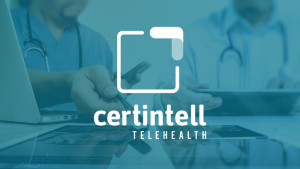Webinar Presenters:
- Albert Ayson: Associate Director of Training and Technical Assistance at AAPCHO
- Emily Kane: Senior Program Manager at NNCC
- Jillian Hopewell: Director of Education and Communications at MCN
Many times having a close partner helps your clinic do more to improve patient support. The Association of Asian Pacific Community Health Organizations (AAPCHO) hosted a series of webinars focused on diabetes management strategies for care teams. In part 3 on Nov. 9, speakers spoke on the importance of leveraging community engagement and partnerships to extend a clinic’s reach and capabilities. Here are three pillars of community engagement for successful diabetes management in a patient population.
Pillar One: Data
“Community engagement is a key component of an effective diabetes management strategy for community health centers,” said Emily Kane from the National Nurse-Led Care Consortium (NNCC).
Kane said that data and management are also at the core of successful diabetes management strategies. Key data health centers should consider collecting includes:
- Socio-economic data
- Social determinants of health (SDOH) data
- i.e . Incarceration data, food environment
- Patient Outcome data from health centers and other providers
- Community needs assessments
By collecting the information above, health centers can build a strategy considerate of its findings.
Within this pillar, there are also four steps to ensuring the strategy will be effective: Plan, Do, Study, Act.
Plan:
- Assess readiness at the organizational, community and partner level
- Conduct informational interviews with other health centers about their diabetes management initiatives to workshop ideas
Do:
- Launch evidence-based interventions that correspond to the needs of your community based on the data you collected. For example, a patient going to a gym might be effective in combating diabetes, but if a gym isn’t readily accessible in the area, either monetarily or geographically, it might not be the best solution to propose.
- Encourage patient-driven self-management goal setting
- Promote digital health literacy and the use of technology
- Initiate team-based care
Study (Improvement Measures):
*But only those meaningful to your patient population
- Short-term (0-3 months) improvement: patient and provider satisfaction
- Long-term (3+ months) improvements: Change in HbA1C levels, tobacco cessation, blood pressure control
Act:
- Review what initiatives were and were not effective and analyze why that was.
- Always have the community in mind when adapting the strategy. What would serve them best? Because health center boards are partially composed of patients, consider asking those board members what strategies could be beneficial, considering they are an integral part of the community.
Pillar Two: Cultural Humility
With so many diverse stories and faces behind health center patients, it’s normal that every situation wouldn’t be handled the same. Cultural differences, if left unaddressed, can cause disaccord between patient and provider, which renders whatever diabetes strategy that is in place promptly ineffective. The following practices can lessen disaccord and build a mutually respectful patient-provider relationship.
- Practice life-long learning. This method of critical self-reflection includes observing and respecting differences along:
- Sociological lines
- Racial/Ethnic lines
- Religious/Spiritual lines
- Geographical lines
- Linguistic lines
- Biological lines
“Culture is first and foremost an expression of self,” said Albert Ayson from AAPCHO during the webinar.
Culturally appropriate diabetes interventions include taking a non-expert approach to care. These interventions can include methods of motivational interviewing, as well putting the patient in the driver seat of recounting what they learned and where they want to go.
- Recognize power imbalances: A clinician has an obligation to their patient to make them feel as comfortable as possible during their visits to capitalize on the patient-provider relationship. Not only is it important to address the cultural imbalances that already exist, clinicians should be wary not to create any further ones. Ayson said clinicians should anticipate multiple cultural identities when conversing with a patient and recognize that the patient “is an expert in their own health care.”
“Self-proclaimed cultural expertise (among clinicians) can lead to prejudice, can lead to stereotyping, which then leads to a power imbalance between patients who may feel really vulnerable,” Ayson said.
- Develop Institutional Accountability: Recognize your organization’s responsibility in creating a culturally-inclusive and sensitive environment for patients.
Consider hiring a workforce with shared lived experiences similar to those of your patient population. Employees such as community health workers and patient navigators, Ayson said, have the skill of coming from the community and can help clinicians overcome barriers to patients accessing care.
Pillar Three: Partnerships
Finally, choose a partner that can help fill in gaps in patients’ needs. For example, if patients of a health center don’t have adequate resources to obtain better food for their health, partnering with a food bank helps bridge that gap.
“We feel strongly that partnership engagement is most effective when done in conjunction with robust data analysis, which identifies the needs and gaps that patients are experiencing, as well as a real, full commitment to cultural humility, which then opens a path to engaging diverse community partners,” said Jillian Hopewell from Migrant Clinicians Network. “Fundamentally, partnership engagement is the process of identifying and engaging with existing community resources.”
Though, these do not always have to be full-fledged partnerships. Health centers can still mutually collaborate with organizations on a more casual level and still reap the benefits of partnering with others.
Hopewell recommends following a continuum in the process of forming a partnership and defines the continuum as follows:
- Coordination: Learn about services and clients served by the other organization.
- Cooperation: Brings increased understanding of target audiences and motivations
- Collaboration: Brings increased recognition of the values of each organization
- Partnership: The two organizations finally engage on a high level of trust and communication. The roles of each party are clearly defined.
Conclusion:
In all, community engagement for diabetes management will require thoughtful interventions. Bringing in the help and experiences of others ensures a diverse and holistic approach to care that meets the patient where they are.



